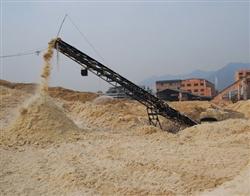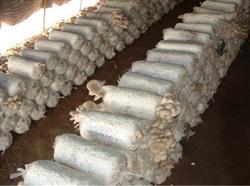How to control diseases and insect pests by planting Dictyophora after flood

How to control diseases and insect pests by planting bamboo shoot after flood? Please guide the pathogens that often occur in Dictyophora cultivation after flooding: slime mold, ash fungus, pests: slugs, termites, mites and other control methods are introduced as follows, for mushroom farmers' reference. The main results are as follows: 1. Slime mold occurs on the bare soil or covered rice straw on the surface of Dictyophora border, which is sticky at the initial stage, will deform and move, showing milky white, orange and yellowish green, so that the growth of mycelium is affected or gradually disappears, and in serious cases, it no longer grows Dictyophora; the buds of Dictyophora are waterlogged and moldy. Prevention and control measures: strengthen ventilation. In the initial stage, carbendazim, 1000 times of thiophanate methyl, 500 times of copper sulfate and 10% bleach can be sprayed continuously for 3-4 times. 2. Botrytis cinerea often occurs in the environment of high temperature and humidity. In the initial stage, the dirty white fluffy hyphae appeared in the overlying soil layer of Dictyophora border, which soon turned pink and black, and the colony was dark smoke gray, and produced a large number of black spores. It mainly harms the hyphae of Dictyophora, causing the mycelium to break until death. Prevention and treatment: early appearance of dirty white villous hyphae is the best period for treatment, when 3% carbonic acid or 2% formaldehyde can be sprayed directly on the disease. When black spores appear, it can be sprayed with a 700-fold dilution of formalin (70%) and thiophanate methyl (70%). In severe cases, cut off the culture material around the affected area, sprinkle fresh lime in and around the affected area, and cover the affected area with plastic film to control its spread. 3. Slug is a mollusk, commonly known as "slug". It has no shell and has an exposed body. it mainly engulfs the ball of Dictyophora, causing the ball to perforate and leaving a white mucus. Prevention and treatment: trap and kill with 1:50:50 calcium arsenate, wheat husk and water in places infested by slugs, or spray 5% coal phenol soap solution and 50% salt water in places infested with slugs. 4. The common termites harmful to Dictyophora are house termites, black-winged termites and yellow-winged termites. Can eat the hyphae of Dictyophora, affecting the yield of Dictyophora. Control method: pursue the ant nest and the main ant road, use 80% arsenite, 15% salicylic acid and 5% iron oxide to form a poison, spray 6-15g per nest and the whole nest will die. 5. Mites are easy to break out at high temperature and humidity, and occur at both the mycelium growth stage and the mushroom stage, which can bite off the hyphae, shrink the hyphae, bite the balls of Dictyophora, and spread germs, resulting in a bad harvest. Control method: spray 2.5% Uranus 2000 times solution or other special acaricides. Click to get more planting techniques of Dictyophora, click to get more planting techniques of edible fungi
- Prev

How to grow Dictyophora with mulberry bagasse?
How to grow Dictyophora with mulberry bagasse? Please introduce that Dictyophora is a famous edible fungus with rich nutrition and delicious taste. In the past, there was no artificial cultivation in this county, and there were no fresh products on the market. People's understanding of Dictyophora is not as familiar as other mushrooms. I think that the cultivation technology may be more complicated, but it is not.
- Next

How to cultivate Pleurotus ostreatus in midsummer?
How to cultivate Pleurotus ostreatus in midsummer? Please give guidance on the method of cultivating Pleurotus ostreatus in midsummer, usually using indoor bacteria and outdoor covering soil to produce mushrooms. Using the opposite cultivation method, burying bacteria in open field and cooling and producing mushroom in indoor can control the pollution of miscellaneous bacteria in high temperature period, which is beneficial to the growth and reproduction of Pleurotus ostreatus hyphae.
Related
- Fuxing push coffee new agricultural production and marketing class: lack of small-scale processing plants
- Jujube rice field leisure farm deep ploughing Yilan for five years to create a space for organic food and play
- Nongyu Farm-A trial of organic papaya for brave women with advanced technology
- Four points for attention in the prevention and control of diseases and insect pests of edible fungi
- How to add nutrient solution to Edible Fungi
- Is there any good way to control edible fungus mites?
- Open Inoculation Technology of Edible Fungi
- Is there any clever way to use fertilizer for edible fungus in winter?
- What agents are used to kill the pathogens of edible fungi in the mushroom shed?
- Rapid drying of Edible Fungi

